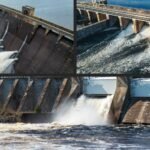Energy resilience in critical infrastructure refers to essential facilities, such as power plants, transportation networks, and communication systems, to withstand and recover from disruptions, ensuring the continuous delivery of energy services. In an increasingly interconnected and digitally reliant world, the resilience of critical infrastructure is paramount for maintaining societal functions, economic stability, and national security. Strengthening energy resilience requires proactive measures to mitigate risks, enhance infrastructure robustness, and adapt to evolving threats.
Understanding Critical Infrastructure Vulnerabilities
Critical infrastructure faces many threats, including natural disasters, cyberattacks, physical sabotage, and geopolitical disruptions. Energy systems, in particular, are vulnerable to extreme weather events, for example, hurricanes, floods, and wildfires, which can damage infrastructure and disrupt energy supply chains. Cyber threats, including ransomware attacks and malware, pose additional risks to energy networks, compromising data integrity, operational control, and customer service.
Building Resilient Infrastructure
Building resilient energy infrastructure involves a multifaceted approach that addresses physical and digital vulnerabilities. Investments in infrastructure hardening, such as reinforcing power lines, securing substations, and implementing grid modernization technologies, enhance the resilience of energy networks against natural disasters and physical attacks. Moreover, bolstering cybersecurity measures, such as encryption, intrusion detection systems, and incident response protocols, protects energy systems from cyber threats and ensures data integrity and operational continuity.
Enhancing Interagency Cooperation and Coordination
Effective energy resilience requires collaboration among government agencies, private sector stakeholders, and local communities. Interagency coordination facilitates information sharing, resource allocation, and joint response efforts during emergencies. Public-private partnerships enable the exchange of best practices, expertise, and resources to enhance infrastructure resilience and mitigate risks. Engaging local communities in resilience planning and emergency preparedness fosters resilience at the grassroots level, empowering communities to withstand and recover from disruptions.
Embracing Innovation and Adaptation
As threats to critical infrastructure evolve, innovation and adaptation are essential for maintaining energy resilience. Emerging technologies, such as distributed energy resources, microgrids, and advanced analytics, offer new opportunities to enhance infrastructure resilience and diversify energy sources. Additionally, incorporating climate resilience considerations into infrastructure planning and design ensures that energy systems can withstand the impacts of climate change, for example, extreme heat, storms, and rising sea levels.
Conclusion
Energy resilience in critical infrastructure is essential for safeguarding societal functions, economic stability, and national security. By understanding vulnerabilities, building resilient infrastructure, enhancing interagency cooperation, and embracing innovation, stakeholders can mitigate risks and enhance the resilience of energy systems. Strengthening energy resilience requires a concerted effort from government, industry, and communities to ensure the continuous delivery of energy services in the face of evolving threats and challenges.












